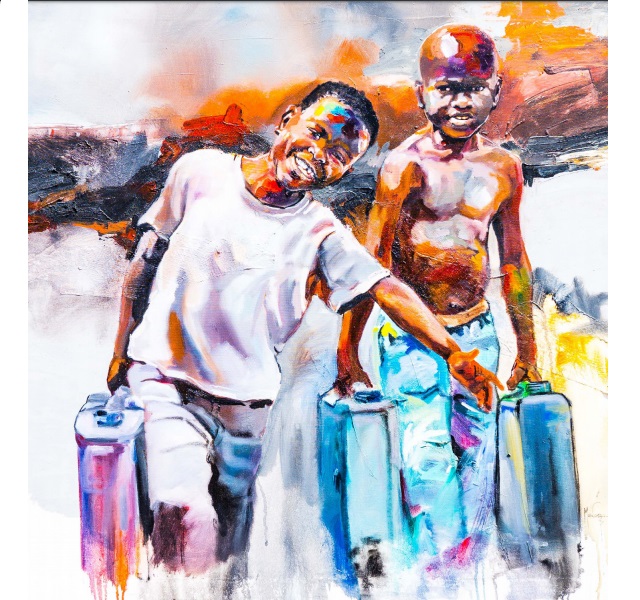
Art creates water

An exhibition of contrasts at the musuem
Kampala, Uganda | DOMINIC MUWANGUZI | Art is increasingly being adopted as a medium for institutions to advocate social change in communities. Art is seen to have potential to shape or influence everyday perceptions by mirroring the social condition and behavior of communities.
An art exhibition that fits this mold is ongoing at the Car Gallery of the Uganda Museum in Kampala. Dubbed `Art creates Water 2019’ the multi-disciplinary exhibit showcases works by several artists in one space. Experienced artists and pupil- artists are together in a setting that suits their varied works in production techniques, medium or material used, nature of theme and concept navigated, and dimension and type of art (realistic, conceptual or abstract).
Pupils from the French School and Ambrossoli International School, for example, are exhibiting works that are unique in medium and nature of expression. In general, the pupils’ artworks are direct and accurate responses to the theme. On the other hand, experienced artists like Ronex, Ibrahim Muwanga and Kintu Paul approach the theme with more studio deftness, abstraction, and symbolism. Combined, the different approaches appeal to the diverse audience.
This combined exhibition is an annual event that is in its third year. This year, the focus is on provision of clean water to the community. The issue is framed as a social justice struggle with lack of clean water seen as a form of disenfranchisement for communities, not only in Uganda but throughout Africa.
The exhibition has a very interesting curatorial practice. Instead of putting together a perfect art display in linear form, complete with brilliant curatorial text as a form of promotional material, the curator focuses on the “processes of art-making and display.”
The approach is deliberate – to follow how the artists respond to the idea of an exhibition which still is- unfortunately- regarded within many art circles as the sole destination for art. The curator, Phillip Balimunsi, to this end does not alter the identity of the exhibition space. The antique limousines of Uganda’s former heads of state provide a startling background to the art in the foreground. This obvious incongruity adds to the power of the exhibition. It raises another set of questions: how much attention did the former presidents who rode in the limousines give to the issue of social justice?
In an almost similar trick, the curator divides the art into two parts. In the foyer of the gallery are the artworks of experienced artists and on the dais are the works of the pupils from International schools. According to the curator, there is a clear distinction between the two groups. The established artists have few artworks directly reacting to the theme of the exhibition, whereas the learners have art that resonates with the theme to the letter.
“It is rare that the established artist will react to the theme of the exhibition unless they’re commissioned. This is unlike the kids who will follow the theme faithfully,” observes Balimunsi.
The disparity matches the contrast between the motive of the artist who creates the works and the audience intended to embrace the work. In this context, it is clear that the established artist is largely motivated to produce art to sell rather than engage the public. The audience appreciates that as much as art is used to advocate for social change, casting a critical gaze on the processes of art making and display improves the perception of exhibitions in contemporary art. The curator also technically nudges the audience to always think of alternatives in order to interrupt their everyday normal.
****
The exhibition is a brainchild of Viva Con Agua, Uganda; a community based initiative. The exhibit is ongoing at the Car Gallery, Uganda Museum.
The post Art creates water appeared first on The Independent Uganda:.
0 Response to "Art creates water"
Post a Comment